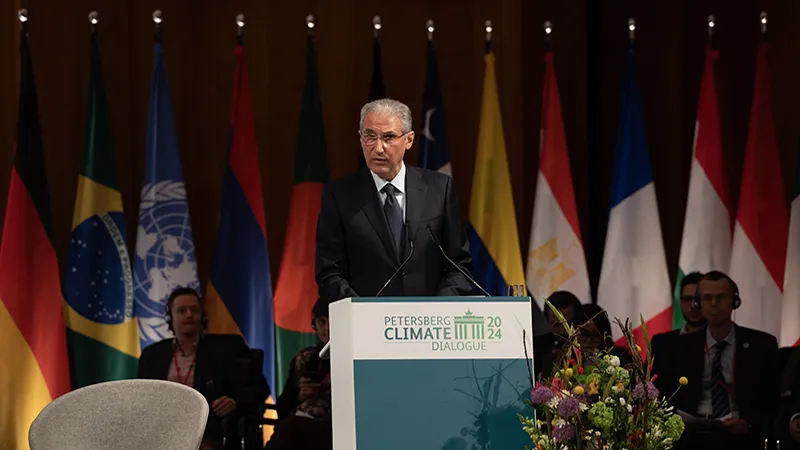The theme for this year’s PRI in Person conference, supported by the United Nations, was “moving from commitments to action”. Fittingly, much of the discussion focused on how investors and other market participants can accelerate the adoption of more sustainable practices.
This year’s conference, held in Tokyo, provided a platform for Principles for Responsible Investment (PRI) signatories and other investment professionals to learn, exchange and collaborate with peers around the world. Here, S&P Global Ratings’ Bertrand Jabouley, Bruno Bastit and Bruce Thomson (pictured from left to right) give their perspective on the event’s key takeaways.
Global solutions may require local perspectives
With this year’s conference taking place in Japan, particular emphasis was placed on the role governments and the private sector play in meeting sustainability objectives in Asia.
More broadly, however, conference sessions highlighted the important role of market actors in ensuring the flow of capital to the places that need it most, particularly in emerging markets, where the perception of higher risks can impede the flow of funds. There were calls for solutions more considerate of – and adapted to – local contexts. Conference participants suggested that local and foreign governments could foster a more supportive regulatory environment, allocate resources directly, or help mobilise private funds for sustainability initiatives.
There is an increasing understanding in the investor community that market actors should reconcile global sustainability objectives with the local context if solutions are to be impactful and investible. However, this may require more nuanced or localised risk analysis, support for the development of project pipelines, and the use of blended finance or other risk management strategies.
Role of private capital markets is expanding
Private capital market investors are increasingly seeking to improve the sustainability profile of their portfolios, for risk management, value creation or impact reasons. But the lack of reliable sustainability data at the investee level is a significant hurdle here. In this respect, the ESG Integrated Disclosure Project aims to promote transparency in the private credit and syndicated loan markets by providing a standardised framework for companies to report ESG data to their lenders on a voluntary basis.
The current and expanding role of the private capital markets presents potential to advance sustainability goals at investee companies through active engagement. Private equity investors may be uniquely placed to be stewards for positive sustainability outcomes, given their ability to work closely with the boards and management of investee companies.
Sustainability-related regulation prompts concrete action
At the conference, regulation, both already in effect and upcoming, was treated as more immediate and requiring concrete action from investors and companies alike – to both manage risks and take advantage of opportunities. In Europe, companies within scope of the Corporate Sustainability Reporting Directive are preparing to report on the impact of their 2024 activities. In the US, the 2022 Inflation Reduction Act was cited as an example of how government-led programmes can directly spur action and investment to advance the sustainability agenda at home and globally.
An increase in sustainability-related regulations may test the ability of investors and companies to manage both the risks and opportunities presented by a changing regulatory environment.
Sustainability topics don’t exist in isolation
The conference often dealt with the interactivity, and at times, trade-offs, between sustainability issues and efforts to address them. For instance, emphasis was placed on a “just transition”, broadly understood as efforts taken to recognise and mitigate potential adverse effects on the energy transition, including impacts on workers and communities.
Panellists in one session highlighted, for instance, the need to support workers displaced by the decommissioning of a coal power plant as well as the challenges to identifying and managing forced labour risks in the supply chains serving solar projects.
Understanding and assessing the full spectrum of sustainability topics and how these topics interact in both complementary and competing ways could allow investors to make decisions with a better view on the full range of risks and impacts.
Maintaining a credible sustainable debt market can deliver meaningful outcomes
As sustainable debt markets continue to expand and mature, greater transparency and accountability will be needed to ensure the market’s integrity and assuage concerns about companies overstating their green and social credentials.
One of the conference’s recommendations relates to the remuneration and structure of sustainability-linked instruments – specifically with respect to step-ups and step-downs.
Public disclosure of targets and intended impacts alongside independent verification can help enhance transparency and improve benchmarking, particularly for indicators beyond GHG emissions. The Sustainability-Linked Bond and Loan Principles provide clear guidance on this, but effectively demonstrating relevance of sustainability targets and indicators remains a challenge to be overcome in a market that is still nascent.
It is clear from the PRI conference that moving from sustainable commitments to action will require participation from a wide range of market players. Considering local perspectives, taking advantage of private capital markets, ensuring a “just transition”, maintaining credible sustainable debt markets, and managing sustainability-related regulation are key themes to be considered during this period of transition from commitments to action.









